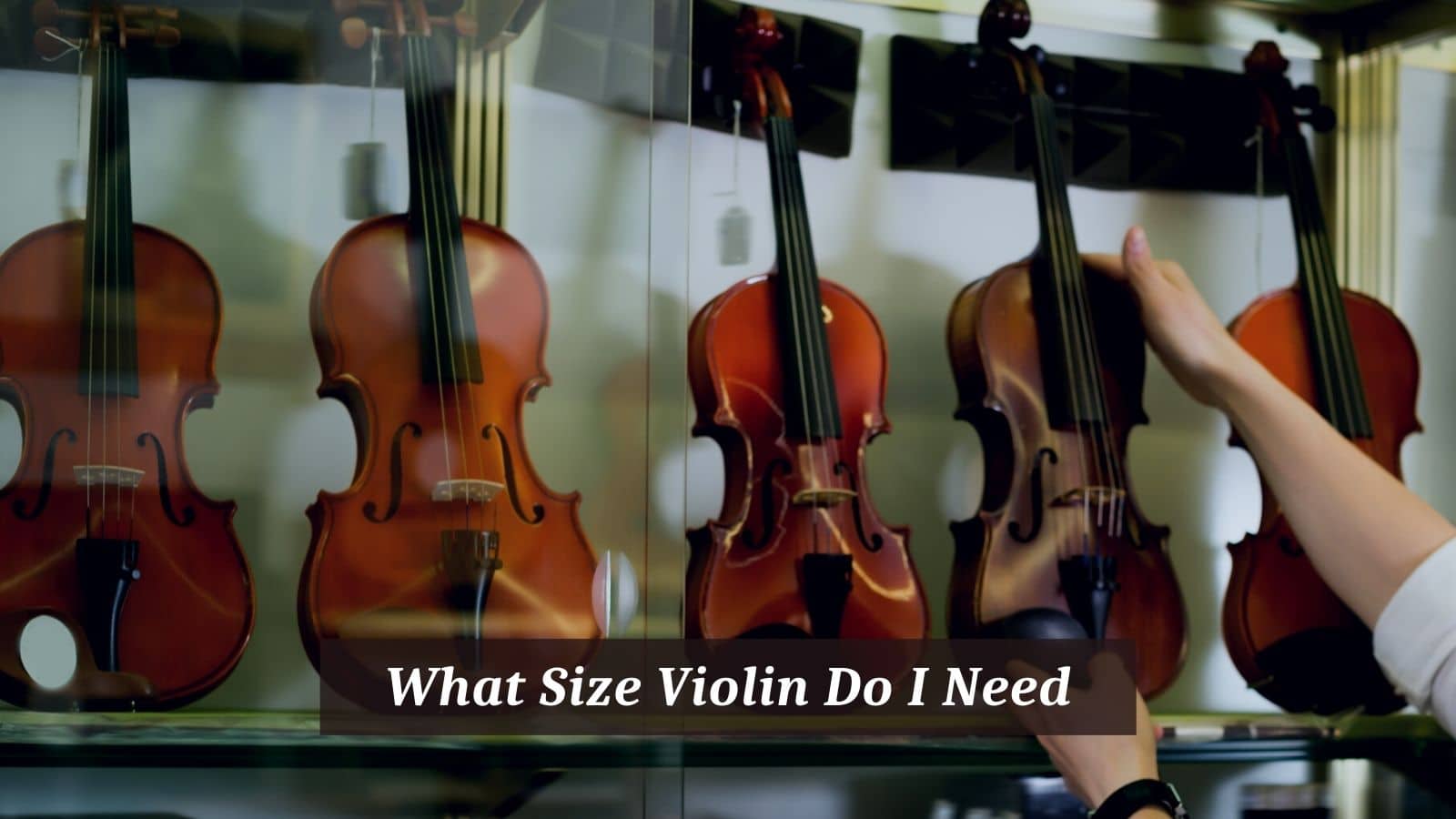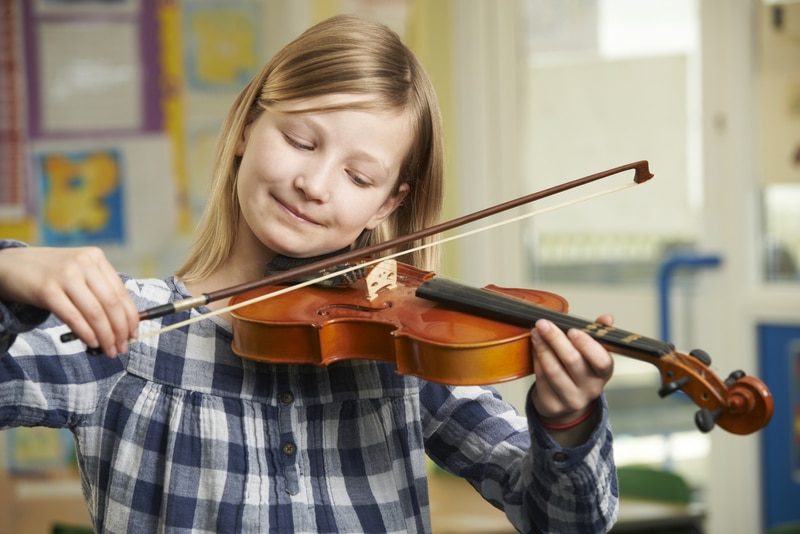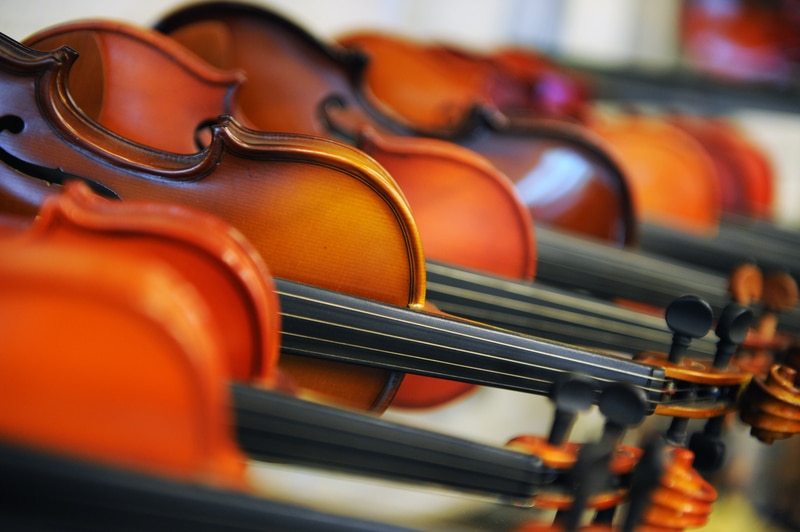
Nowadays, music is becoming a very popular hobby across all ages. It is not rare to find parents who want their children to take up music lessons or music lovers who want to learn the basics of an instrument.
For many of them, the violin is the ideal choice: it is small, easy to carry along, and has a very attractive sound.
However, choosing the right size among all options that are offered in the market nowadays may not seem like an easy task for some, while others overlook the importance of choosing the right size of the instrument.
To answer all these doubts, we present here a complete guide on how to choose the ideal size of violin for each profile.
What Size Violin Do I Need
Determining factors
Some factors determine the ideal length of the instrument, including the age of the student and especially the length of the arms.
A musical instrument that does not match the size of the player can feel quite uncomfortable and even painful, as the good posture of the player depends on the right-sized instrument.
A violin that is too big for the student may require the student to stretch arms and fingers too much in order to reach the notes, and that will cause tension and fatigue.
A violin that is too small is also difficult to play, as the student will have to contract the fingers too much and will never feel comfortable with the instrument.
Sizes of violin
There are about seven sizes of violin that are considered standard, although other sizes can be found on the market. Each size is targeted for a specific age group. They are usually advertised in numbers that look like fractions. By measuring the size of the body of the violin, we have:
- 1/16: about 230mm
- 1/8: about 255 mm
- 1/4: about 280mm
- 1/2: about 310mm
- 3/4: about 335mm
- 4/4: about 356 mm
The 4/4 violin is also called a full-size violin. It fits most adults and teenagers. Note that the fractions above are not mathematical fractions: a 1/2 violin is not half the size of a 4/4.
Smaller violins are used by children according to their age.
We have approximately:
- 1/16: 5 years and under
- 1/8: between 5 and 6 years old
- 1/4: between 6 and 7 years old
- 1/2: between 7 and 9 years old
- 3/4: between 9 and 11 years old
- 4/4: 11 years old and above
The 7/8 violin
The full-size violin, as we can see above, can be used by most adults. However, not all adults have arms long enough to play a full-sized violin comfortably, especially girls of small height and shorter arms. For them, there is usually a special size of violin, which is the 7/8.
It is slightly smaller than the 4/4, but still able to provide a powerful sound. Smaller-sized instruments usually cannot sound as loud due to their smaller resonance boxes.
Unfortunately, they are not easy to find in shops as they are usually handmade, unlike the factory-made violins that come in the standard sizes mentioned before.
For children aged two and three, there is a very small-sized violin, the 1/32.
Finding the right size
There are some techniques that can be used to decide the ideal violin size for each student. However, the student will need to have the instrument in his hands.
Measuring with a tape
By measuring the distance between the nape of the neck and the center of the palm of the hand, it is possible to determine the ideal size of the violin the student should use. Before starting to measure, the arm must be fully extended. The following chart can be used as a reference:
- About 35.5 cm: 1/16
- About 42 cm: 1/8
- About 47 cm: 1/4
- About 51 cm:
- About 56 cm: 3/4
- About 58.5 cm: 4/4
Holding the scroll
The first technique is placing the violin on the shoulder of the student, as if he or she were going to play it. The student must be able to reach and fully hold the scroll of the violin.
If the student is unable to do so, or if the wrist barely reaches the scroll, it means that the violin is too big.
Alternatives
It is not always easy to find all the sizes of violins in local shops, as most of the violins that are sold are full-size violins. If the ideal size is not available, the student can use an instrument that is one size bigger or smaller than his or her size.
Considering that children grow fast, choosing the bigger option is acceptable. However, as said before, if the difference is significantly greater, the student may develop some injuries.
Healthy choice
When the student plays an instrument that is very large, he needs to stretch his fingers to reach the notes. If the instrument is very large, he needs to find an awkward position to fit the fingers in the correct place.
In both cases, agility and coordination can be compromised due to excessive tension or the wrong posture. Another problem is the added burden on the muscles; if the instrument is hunched, posture can be affected, and tendons and muscles suffer too much strain.
Types of violin
There are two main types of violins: factory-made and handmade. The latter are quite inexpensive but usually of lower quality because they are mass produced in order to sell quickly.
They are the perfect choice for children, who often cause some damage to instruments as they are still developing their motor skills. Most brands offer different models and many options for sizes.
Handmade instruments are more expensive, and because they are not mass produced, it is not so easy to find them in every shop. Most of them are full-size violins.
Smaller sizes are even rarer, and, as said before, they are not the ideal choice for children due to the damage that they can easily cause to the instrument.
Conclusion
Choosing the right violin size has to do with health care. The wrong size can cause serious injuries to the student and also cause the student to develop incorrect postural habits that can be quite difficult to overcome once the student has been conditioned to the old habit.
Injuries that can be derived from bad posture can also prevent the student from playing the instrument temporarily, and that can be a very difficult experience for the young students.


